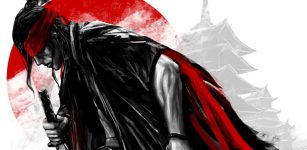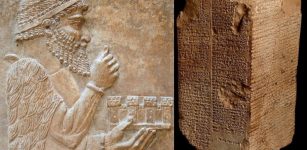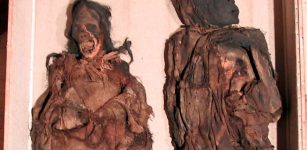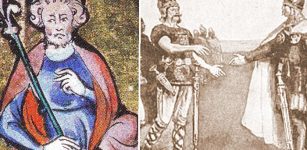God Odin Was Exiled From Asgard – The Kingdom Of The Gods – But He Had No Regrets For Breaking Norse Society’s Norms
Ellen Lloyd - AncientPages.com - In Norse society, rules and laws were expected to be followed. Breaking norms led to an individual being shunned and suffering some consequence. Everyone could be punished for not following the rules. No one stood above the law, and gods were also expected to behave according to Norse standards.
The greatest of all Norse gods, Odin engaged in practices completely unacceptable in Norse society. As a result, God Odin was exiled from Asgard, the Kingdom of Norse gods. He was scorned and labeled unfit to be called a god.
However, this didn't bother Odin at all. He knew exactly what he had done and didn't regret it. Nothing stood between him and his ambitions.
As previously discussed on Ancient Pages, God Odin was probably the most complex figure of all the Norse Gods.
In the Norse pantheon, Odin is considered an ‘Allfather’ and ruler of Asgard, but he was never entirely to be trusted.
Odin was a god of magic, wisdom, and war, but his desire to gain knowledge was almost like an obsession.
It is said that the great Odin sacrificed an eye to Mimir, the Norse god of wisdom, in exchange for a drink from Mimir’s well located in Jötumheimr, one of the mysterious nine world of Yggdrasil.
God Odin And Norse Shamanism
In Norse mythology, Seidr is the practice of magic and shamanism. Shamans played a very important role in Norse society. These enigmatic beings were known for their unusual powers, and they were credited with the ability to alter destiny. Beings who mastered Seidr were, therefore, as much feared and respected by people and even the Norse gods.
God Odin and Goddess Freya practiced shamanism. To become a shaman, one had to go through a ritual that involved dying resurrection. This was the only way to gain divine powers. Odin underwent the ritual in the venture for the runes. The word “rune” comes from Old Norse and means “Secret knowledge and wisdom.” God Odin himself was regarded as the “Father of the Runes.” The Vikings believed runes were created when their chief god Odin speared himself to the cosmic world tree, Yggdrasil, hoping to receive secret knowledge.
The most powerful of the shamans was a völva, and her prophecies were feared among Vikings and Norse gods. Norns, known as ‘Shapers of Destiny’ in Norse mythology, were masters of Seidr.
God Odin's quest for knowledge led him to practice shamanism. He did gain supernatural powers and the knowledge he so deeply desired. Still, Odin was punished for his shamanistic practices and exiled from Asgard, the kingdom of the gods, for 9 years!
That a male should practice Seidr was unacceptable and loathsome because it required him to assume a woman's role, both sexually and socially. Men who practiced Seidr were called ergi (Old Norse for “unmanly”). In those days, it was the most horrible thing a man could be called. Men who pursued the practice of Seidr were banished from society, scorned, and laughed at. Practicing Seidr involved divination, clairvoyance, healing, bringing curses on individuals, and controlling the weather. It was something females were supposed to do.
So, naturally, God Odin had to suffer the consequences of becoming involved in the practice of Seidr. Not only was he exiled from Asgard, but he was also scorned for the feminine traits he adapted during the practice of Seiðr. To the pre-Christian Norsemen, his practice made him a transgender unfit to be a God.
God Odin was never embarrassed by this because his greatest ambition was to gain knowledge, and the practice of Seidr made him achieve his goal. God Odin’s shamanic spirit journeys were documented in the Ynglinga Saga and the Eddic poem - Baldur’s Dreams. Odin’s journey to the underworld with his eight-legged horse, Sleipnir, is also chronicled.
Updated on February 20, 2023
Written by Ellen Lloyd – AncientPages.com
Copyright © AncientPages.com All rights reserved. This material may not be published, broadcast, rewritten or redistributed in whole or part without the express written permission of AncientPages.com
More From Ancient Pages
-
 On This Day In History: Isaac Asimov Creator Of Science Fiction Was Born – On Jan 2, 1920
News | Jan 2, 2017
On This Day In History: Isaac Asimov Creator Of Science Fiction Was Born – On Jan 2, 1920
News | Jan 2, 2017 -
 Tokoloshe: Demonic Creature That Feeds On Spiritual Energy Of Its Victims
Featured Stories | Sep 9, 2020
Tokoloshe: Demonic Creature That Feeds On Spiritual Energy Of Its Victims
Featured Stories | Sep 9, 2020 -
 Shinobi No Mono: The Shadow Warriors And Hattori ‘The Demon’ Hanzo Of Ancient Japan
Featured Stories | Apr 8, 2016
Shinobi No Mono: The Shadow Warriors And Hattori ‘The Demon’ Hanzo Of Ancient Japan
Featured Stories | Apr 8, 2016 -
 Meskiaggasher: Legendary Founder Of The First Dynasty Of Uruk Who ‘Entered The Sea And Disappeared’
Featured Stories | Apr 20, 2021
Meskiaggasher: Legendary Founder Of The First Dynasty Of Uruk Who ‘Entered The Sea And Disappeared’
Featured Stories | Apr 20, 2021 -
 On This Day In History: Naval Battle Of Porto Bello Begins – On Nov 20, 1739
Featured Stories | Nov 20, 2016
On This Day In History: Naval Battle Of Porto Bello Begins – On Nov 20, 1739
Featured Stories | Nov 20, 2016 -
 Centuries-Old Authorship Mystery – Solved By Stanford Musicologist Jesse Rodin
Archaeology | Jul 18, 2022
Centuries-Old Authorship Mystery – Solved By Stanford Musicologist Jesse Rodin
Archaeology | Jul 18, 2022 -
 8200-Year-Old ‘Viste Individual’ – DNA Analysis May Shed Light On Early Migration To Norway
Archaeology | Dec 6, 2015
8200-Year-Old ‘Viste Individual’ – DNA Analysis May Shed Light On Early Migration To Norway
Archaeology | Dec 6, 2015 -
 Jack The Ripper Letter Mystery Solved By Forensic Linguist
Archaeology | Feb 1, 2018
Jack The Ripper Letter Mystery Solved By Forensic Linguist
Archaeology | Feb 1, 2018 -
 Skull From Broken Hill, Zambia Is Relatively Young – New Analysis Shows
Fossils | Apr 2, 2020
Skull From Broken Hill, Zambia Is Relatively Young – New Analysis Shows
Fossils | Apr 2, 2020 -
 Strange Radiation Case – Medical Files Secretly Erased?
Featured Stories | Sep 13, 2019
Strange Radiation Case – Medical Files Secretly Erased?
Featured Stories | Sep 13, 2019 -
 Is A Viking Settlement And Even Older Church Hidden Under St. Clement’s Church In Norway?
Archaeology | Apr 13, 2017
Is A Viking Settlement And Even Older Church Hidden Under St. Clement’s Church In Norway?
Archaeology | Apr 13, 2017 -
 More Anglo-Saxon Burials And Artifacts Found In Lincolnshire, UK
Archaeology | Jan 11, 2024
More Anglo-Saxon Burials And Artifacts Found In Lincolnshire, UK
Archaeology | Jan 11, 2024 -
 Scientific ‘Detective Work’ With South American Mummies Reveals They Were Brutally Murdered
Archaeology | Sep 9, 2022
Scientific ‘Detective Work’ With South American Mummies Reveals They Were Brutally Murdered
Archaeology | Sep 9, 2022 -
 Mummification In Europe May Be Older Than Previously Known – 8,000-Year-Old Evidence Presented
Archaeology | Mar 4, 2022
Mummification In Europe May Be Older Than Previously Known – 8,000-Year-Old Evidence Presented
Archaeology | Mar 4, 2022 -
 Danger Lurking In The Woods – Mysterious Vanishings, Deaths And Unusual Behavior – Part 3
Featured Stories | Jul 9, 2018
Danger Lurking In The Woods – Mysterious Vanishings, Deaths And Unusual Behavior – Part 3
Featured Stories | Jul 9, 2018 -
 Ancient Roman Altarpieces Deciphered And New Roman Goddess Uncovered In The Netherlands
Archaeology | Jun 18, 2024
Ancient Roman Altarpieces Deciphered And New Roman Goddess Uncovered In The Netherlands
Archaeology | Jun 18, 2024 -
 Tragic Curse Of Kaskaskia – The First Capital Of Illinois
Featured Stories | Jan 9, 2020
Tragic Curse Of Kaskaskia – The First Capital Of Illinois
Featured Stories | Jan 9, 2020 -
 Something Strange Happened To Our Ancestors 900,000 Years Ago – Genetic Study Reveals
DNA | Sep 1, 2023
Something Strange Happened To Our Ancestors 900,000 Years Ago – Genetic Study Reveals
DNA | Sep 1, 2023 -
 Major Earthquake Struck The Atacama Desert 3,800 Years Ago, Forcing Hunter-Gatherers To Move Inland
Archaeology | Apr 7, 2022
Major Earthquake Struck The Atacama Desert 3,800 Years Ago, Forcing Hunter-Gatherers To Move Inland
Archaeology | Apr 7, 2022 -
 Battle Of Assandun: The Great Battle In English History And A Brief Period Of Viking Dominion In England
Featured Stories | Apr 11, 2016
Battle Of Assandun: The Great Battle In English History And A Brief Period Of Viking Dominion In England
Featured Stories | Apr 11, 2016


